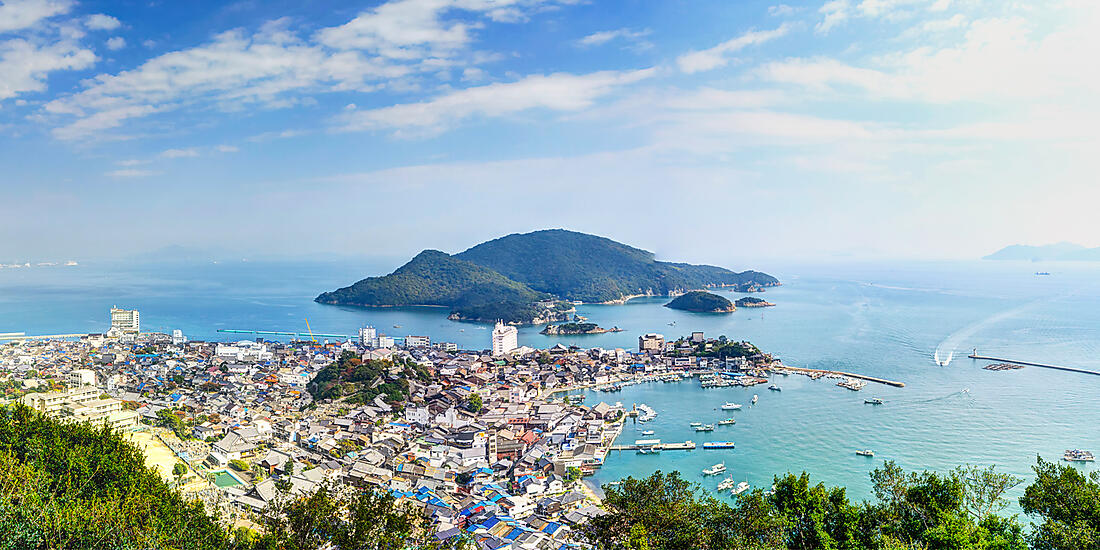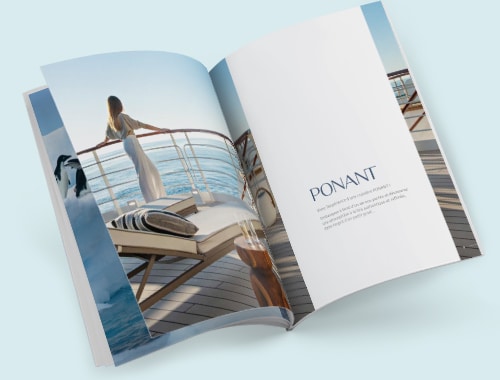Gründe, mit PONANT nach Asien zu reisen
Asien wartet mit tausenden von Inseln und kilometerlangen Küsten auf, die zur Erkundung einer grandiosen Natur und einmaligen Landausflügen einladen und Besucher in Staunen versetzen. Es gibt viele Gründe für eine Kreuzfahrt in Japan, eine Reise auf die Philippinen, entlang der chinesischen Küste oder nach Sri Lanka oder Indien.
Mehr erfahren
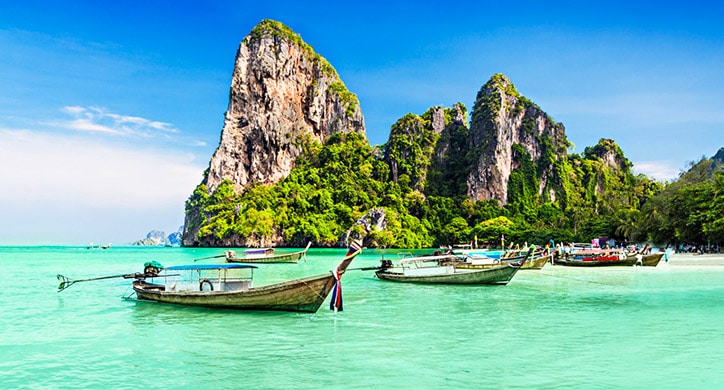
Die schönsten Highlights
Jahrtausendealte Kulturen, buddhistische Tempel, Nationalparks, Reisterrassen, fischreiche Gewässer, idyllische Strände und historische Städte formen zauberhafte Landschaften und zeugen von der Vielfalt der Aktivitäten und kulturellen Highlights, die eine Reise nach Asien für Sie bereithält.
Mehr erfahren
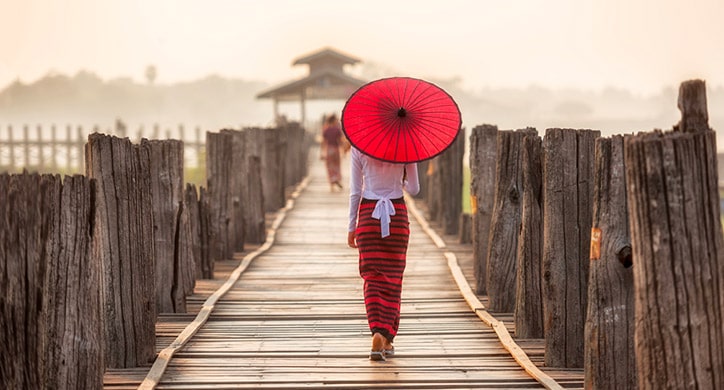
Explore Asia
4 Gründe, mit PONANT nach Asien zu reisen
Asien wartet mit tausenden von Inseln und kilometerlangen Küsten auf, die zur Erkundung einer grandiosen Natur und einmaligen Landausflügen einladen und Besucher in Staunen versetzen. Es gibt viele Gründe für eine Kreuzfahrt in Japan, eine Reise auf die Philippinen, entlang der chinesischen Küste oder nach Sri Lanka oder Indien.
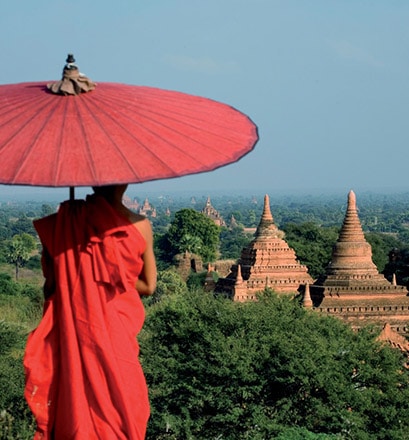
Um weltweit einzigartige Naturwunder zu bestaunen
Sei es der Komodo-Nationalpark mit seinen riesigen Waranen oder der Pink Beach mit seinem feinen, rosafarbenen Sand in Indonesien, Bagan in Myanmar mit seinen fast 3.000 Tempeln oder das Reservat Tanjung Puting in Malaysia, das Tausende von Orang-Utans beherbergt, jedes Land Asiens hat einzigartige Stätten zu bieten, die vom Genie der Menschheit und ihrer Verbundenheit zur Natur zeugen.
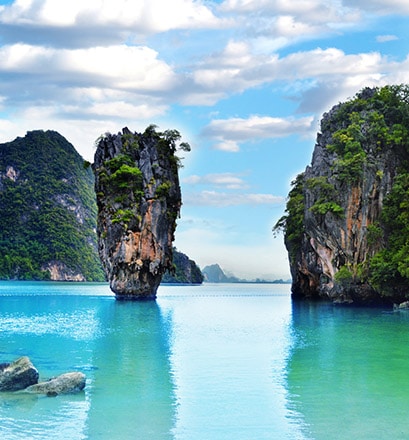
Um grandiose Natur zu entdecken
Kreuzen in der Halong-Bucht in Vietnam oder auf den Kanälen von Alappuzha in Indien, erholsame Sonnenbäder auf einsamen Inseln und paradiesischen Stränden in Thailand oder auf den Philippinen, ein Spaziergang durch die Reisterrassen von Bali oder eine Wanderung auf den Berg Fuji in Japan... Ob auf dem Meer oder an Land mangelt es in Asien nicht an außergewöhnlichen Landschaften: Zerklüftete Berge, zuckerhutförmige Felsformationen, Vulkane, Urwälder, Flüsse, Wasserfälle, schimmernde Seen und ruhige, wilde Küstengebiete bilden fabelhafte Landschaften und sorgen dafür, dass jeder Tag einer Kreuzfahrt in Asien seinen eigenen Zauber hat.
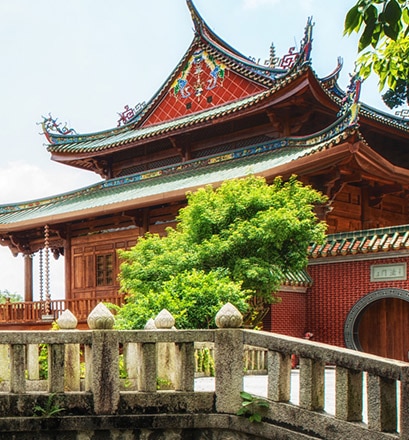
Um verschiedene Kulturen kennenzulernen
Buddhismus, Hinduismus, Schintoismus... Von den vielen Tempeln, die selbst in den entlegensten Regionen zu finden sind, geht eine einmalige spirituelle und ruhige Atmosphäre aus. Allein die detailverliebte, harmonische Architektur der Heiligtümer, die mit Gold, Statuen und Basreliefs verziert sind, verzaubert Besucher. Mit der Religion verschmelzen starke Kulturen, die von einer jahrtausendealten Geschichte geprägt sind und sich auch in der einzigartigen Lebensart widerspiegeln. Die japanischen Kaiserstädte und die Geisha-Shows sind beeindruckende Beispiele dafür.
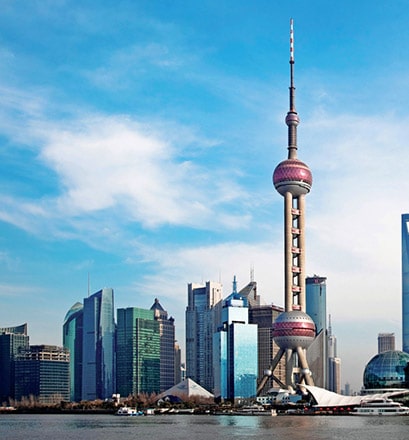
Um hochmoderne Metropolen zu erkunden
Hongkong, Shanghai, Bangkok, Ho-Chi-Minh-Stadt, Singapur... Mitten in Asien haben sich diese Megastädte der Zukunft zugewandt und zum Einfluss Asiens jenseits der Ozeane beigetragen. In den kosmopolitischen Metropolen verschmelzen westliche und östliche Kultur, während die Gegensätze zwischen Wolkenkratzern und historischen oder kolonialen Vierteln, kleinen Märkten und trendigen Boutiquen die Komplexität des asiatischen Kontinents widerspiegeln.
Die schönsten Highlights – Asien
Jahrtausendealte Kulturen, buddhistische Tempel, Nationalparks, Reisterrassen, fischreiche Gewässer, idyllische Strände und historische Städte formen zauberhafte Landschaften und zeugen von der Vielfalt der Aktivitäten und kulturellen Highlights, die eine Reise nach Asien für Sie bereithält.
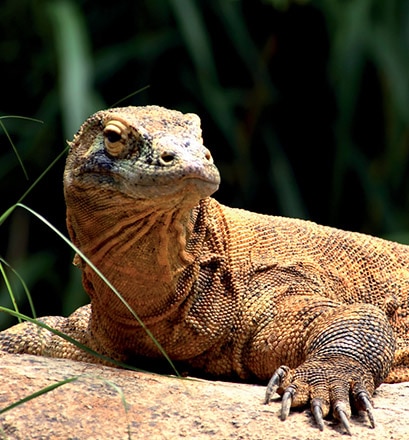
Besuch im Komodo-Nationalpark – Indonesien
Ein Besuch im Komodo-Nationalpark ist eine Zeitreise zurück in eine mehrere Millionen Jahre zurückliegende Vergangenheit. Hier leben zwar keine Dinosaurier, wohl aber die berühmten Komodowarane, auch Komododrachen genannt. Die Riesenechse kann bis zu drei Meter lang und 120 kg schwer werden. 2.500 Tiere leben in dem 1986 zum UNESCO-Welterbe erklärten Nationalpark. Das riesige Gebiet umfasst ganze 29 Inseln und ist nicht zuletzt auch wegen seiner Landschaften einen Besuch wert, die mit Regenwäldern, weißen Sandstränden, Savannen und Bergen aufwarten.
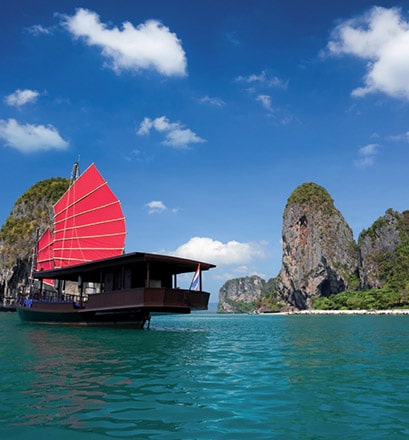
Kreuzen in der Halong-Bucht – Vietnam
Die grandiosen, weltweit einzigartigen Landschaften der weltberühmten Bucht zählen zu jenen Orten, die man am besten auf dem Seeweg erkunden kann. Inmitten der 1.969 Karstinseln erwartet Sie beim Kreuzen in der Halong-Bucht eine ganz besondere Auszeit. Während die traditionellen Dschunken ihre orangefarbenen Segel entfalten, sorgen Binnenseen, Buchten, Höhlen und Grotten mit beeindruckenden Stalaktiten und Stalagmiten für unvergessliche Erinnerungen.
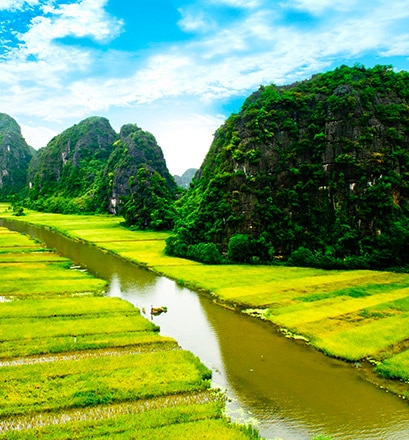
Sich treiben lassen in Ninh Binh – Vietnam
Ninh Binh wird auch als „trockene Halong-Bucht“ bezeichnet. Die Landschaften der Provinz in Nordvietnam ähneln jenen ihrer berühmten Nachbarsregion, wobei sich die Felsformationen hier am Ufer des Ngo-Dong-Flusses erheben. Hier können Ausfahrten in kleinen traditionellen Booten unternommen werden, um die von Reisfeldern bedeckten Ufer zu bewundern und die drei Höhlen zu durchqueren, die zur Bekanntheit der Region beigetragen haben. Zu den Juwelen von Ninh Binh gehören der Nationalpark Cuc Phuong, einer der am besten erhaltenen Regenwälder des Landes, und die Bich-Dong-Pagode, die man ebenfalls auf keinen Fall verpassen sollte.
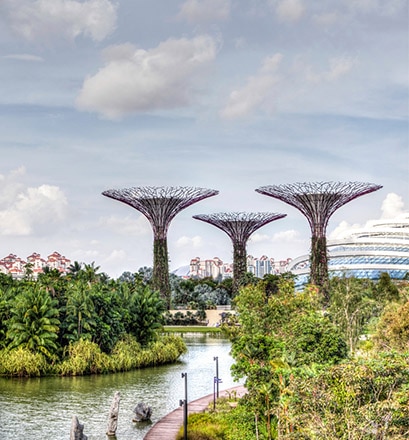
Entspannen in den futuristischen Gardens by the Bay – Singapur
Entdecken Sie einen spektakulären botanischen Garten, der die Stadt Singapur zu einer der grünsten Städte gemacht hat. Die Gardens by the Bay mit einer Fläche von 101 Hektar umfassen drei Gärten im Herzen der Stadt, die eine unglaubliche Pflanzenwelt beherbergen. Der unter einer Glaskuppel gedeihende Nebelwald zählt zu den eindrucksvollsten Attraktionen des angelegten Ökosystems: Aus einem 35 Meter hohen, dicht bewachsenen Hügel entspringt der höchste Binnenwasserfall der Welt. Draußen verschlagen die 50 Meter hohen Supertrees Besuchern den Atem.
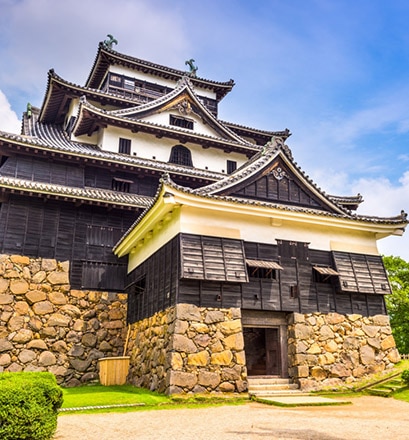
Reise in die Vergangenheit in Matsue, Stadt der Samurai – Japan
Sie trägt die Spitznamen „Stadt der Burgen“ oder „Wasserstadt“. Im Süden Japans liegt Matsue am Schnittpunkt zwischen der Nakaumi-Lagune und dem Shinji-See. Besonders bei Sonnenuntergang bietet die atemberaubende Landschaft einen zauberhaften Anblick. Doch die Stadt ist vor allem durch ihre Geschichte berühmt geworden. Ihre Burg und ihr sechsstöckiger Bergfried, erbaut im Jahr 1611, gehören zu den letzten zwölf mittelalterlichen Burgen in Japan und erinnern an die damalige Feudalgesellschaft. Nicht weit entfernt können in einer alten Samurai-Residenz Gegenstände aus dem Alltagsleben der Krieger aus der Edo-Zeit entdeckt werden.
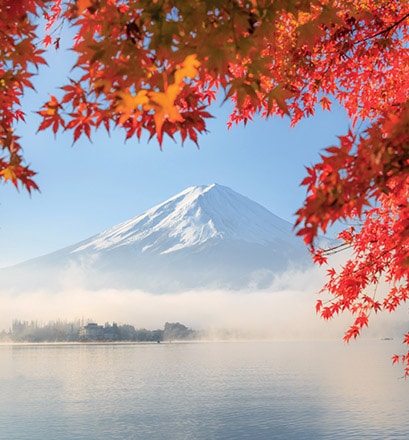
Spirituelle Auszeit am Berg Fuji – Japan
Wer kennt sie nicht, die Bilder des Berges Fuji, der sich mit seinem schneebedeckten Gipfel weit hinter den Kirschblütenzweigen im Vordergrund erstreckt? Als romantische Kulisse par excellence wurde der verehrte Berg 2013 als „heiliger Ort und Quelle künstlerischer Inspiration“ in die Liste des UNESCO-Weltnaturerbes aufgenommen. Neben den herrlichen Ausblicken bezaubert der Ort auch mit dem Shinto-Schrein Fujisan Hongu Sengen Taisha. Er wurde vor 1.000 Jahren erbaut und ist der Hauptschrein der 1.300 Asama-Schreine des Landes, mit denen die Geister der Vulkane und insbesondere des Berges Fuji verehrt wurden.
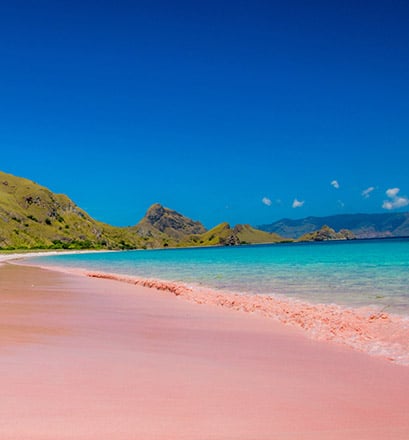
Entspannen am einzigartigen Pink Beach – Indonesien
Dieser Strand zählt zu den beeindruckendsten der Welt. Der im Komodo-Archipel gelegene Pink Beach verdankt seinen Namen der erstaunlichen Farbe seines Sandes: rosa. Die zahlreichen vorgelagerten Korallen geben dem angenehm weichen Sand seine besondere Farbe. Mit dem leuchtend blauen Wasser und den wüstenartigen Hügeln im Hintergrund bildet der pudrige Sand ein einzigartiges Farbenspiel: ein wunderbarer Ort für ein außergewöhnliches Badeerlebnis. Am Pink Beach empfiehlt es sich auch, Schwimmflossen, Taucherbrille und Schnorchel anzulegen, um die berühmten Korallen und die vielen bunten Fische zu beobachten, die hier auf Nahrungssuche sind.
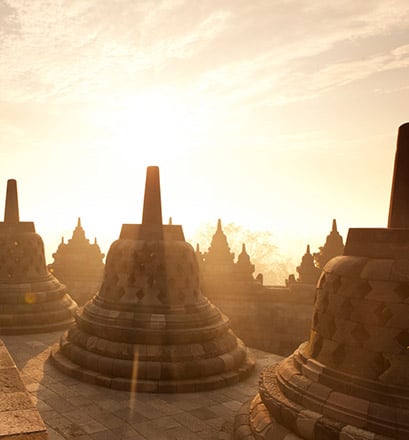
Den Geheimnissen von Borobudur auf den Grund gehen – Indonesien
Der im 8. und 9. Jahrhundert im Zentrum der Insel Java errichtete buddhistische Tempel Borobudur, seit 1991 UNESCO-Weltkulturerbe, ist eine bedeutende Pilgerstätte und ein architektonisches Meisterwerk. Die Galerien sind mit aufwendigen Basreliefs geschmückt, die vor Ort angefertigt wurden und an das Leben Buddhas erinnern. Oben auf der Spitze des Tempels bieten die Terrassen mit ihren 72 prächtigen perforierten Stupas einen atemberaubenden Blick auf die umliegende Landschaft.
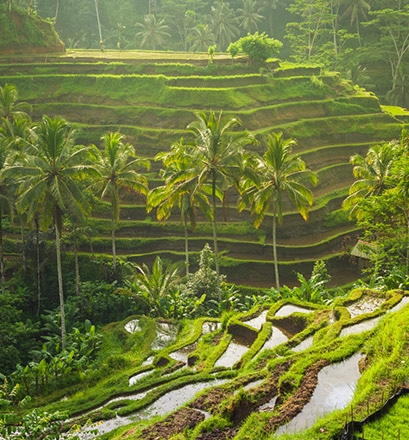
Spaziergang durch die Reisterrassen von Bali – Indonesien
Zwar ist Bali in erster Linie als Surf- und Yoga-Paradies bekannt, doch ist die Insel auch eine wahre Oase der Ruhe und des Friedens. Die Abgeschiedenheit findet man vor allem im Herzen der Insel vor, wo sich die berühmten Tegalalang-Reisfelder erstrecken. Die von üppiger Vegetation umgebenen Terrassenplantagen fallen in einer Art Kaskade bis ins Tal hinab. Wenn die Sonne scheint, erstrahlen die Felder in tausenden Nuancen von leuchtendem Grün. Hier hat Bali seinen ursprünglichsten Charme bewahrt.
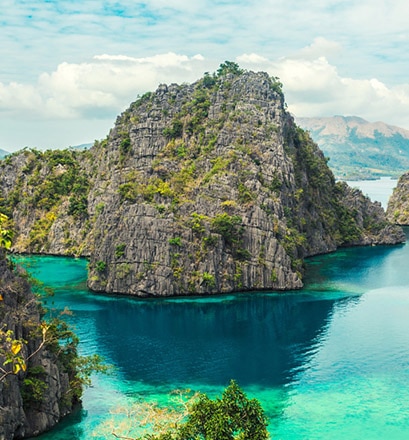
Das Paradies von El Nido erkunden – Philippinen
El Nido ist der Ausgangspunkt für eine Tour ins verborgene Paradies. Mit kleinen Auslegerbooten gelangt man von einer Bucht in die nächste, in die sich jeweils wunderschöne, versteckte Strände schmiegen. Die grün bewachsenen vorgelagerten Felsinseln bilden einen frappierenden Kontrast zum türkisfarbenen Wasser. Das Baden im warmen Wasser ist angenehm und beim Schnorcheln bekommt man eine lebendige Unterwasserwelt zu Gesicht. Es gibt keinen besseren Ort, um dem Alltag zu entfliehen.
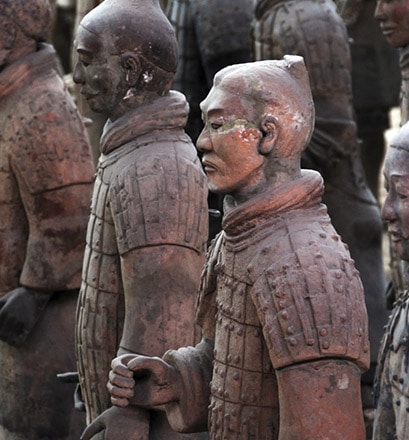
Xi’an und die Terrakotta-Armee – China
Das chinesische Xi’an ist eine Stadt wie keine andere. Vor 3.100 Jahren wurde sie aus dem Boden gestampft und gilt damit als eine der ältesten Städte des Landes. Xi’an ist zudem eine der vier großen alten Hauptstädte Chinas, die einst von den mächtigen Dynastien als solche ausgewählt wurden. Qin Shi Huang, einem der Kaiser von China, verdanken wir eine weitere beachtliche Besonderheit von Xi’an: eine Armee aus 8.000 Tonsoldaten. Soldaten aller Ränge wurden im 3. Jahrhundert v. Chr. mit unterschiedlichen Merkmalen samt Ausrüstung, Streitwagen und lebensgroßen Rössern in Ton nachgebildet, um das kaiserliche Mausoleum zu beschützen. Ein beeindruckender Anblick.
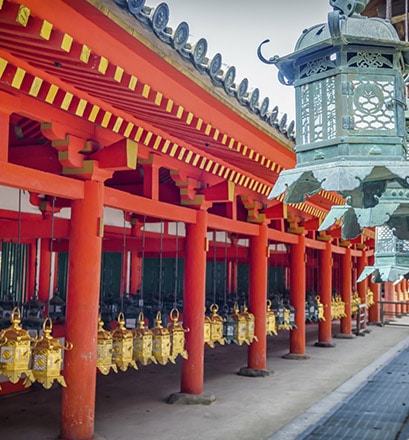
Besuch in den ehemaligen Kaiserstädten – Japan
In Kyoto und Nara tauchen Sie ein in das unbekannte Japan, das seit jeher die Fantasie beflügelt. Nara war im 8. Jahrhundert die Hauptstadt des „Landes der aufgehenden Sonne“. Tempel und Heiligtümer aus jener Zeit können noch heute besichtigt werden, darunter der Todaiji-Tempel, der größte Holztempel der Welt. Kyoto hingegen war mehr als zehn Jahrhunderte lang, von 794 bis 1898, die Hauptstadt des Landes. Ein Besuch in der legendären Stadt, der Wiege der traditionellen japanischen Kultur und ihres einzigartigen Lebensstils, ist eine ideale Gelegenheit, prächtige Tempel zu entdecken, die Meditation oder die Kunst des Tees zu erlernen oder sich eine Geisha-Show anzusehen.
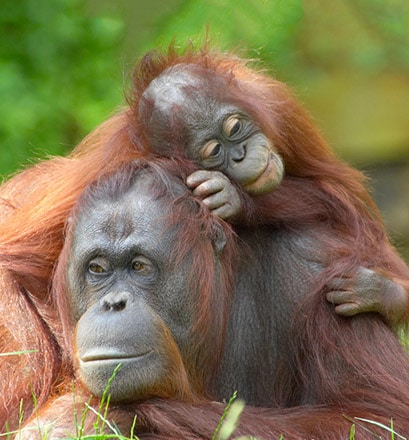
Begegnungen mit den Orang-Utans – Malaysia
Der 1971 gegründete und seit 1977 als UNESCO-Biosphärenreservat klassifizierte Nationalpark Tanjung Puting ist einer der letzten Orte auf der Welt, an denen Orang-Utans in halbfreier Wildbahn leben. Heute beherbergt das Reservat mit 6.000 Tieren die größte Population der Welt. Der Park dient auch als Rehabilitationszentrum, um verwaisten und misshandelten Orang-Utans sowie Orang-Utans, die in illegaler Gefangenschaft gelebt haben, zu helfen, wieder selbstständig überleben zu können. Ziel ist es, sie eines Tages wieder in ihrer natürlichen Umgebung freizulassen. Nester bauen, nach Nahrung suchen, sich in den Bäumen bewegen... Es kann mehrere Jahre dauern, bis die Tiere wieder lernen, sich in der Wildnis zurechtzufinden. Bis dahin ist vor allem die Fütterungszeit, wenn die Ranger Früchte auf die Futterschalen der Primaten legen, einer der ganz besonderen Momente.
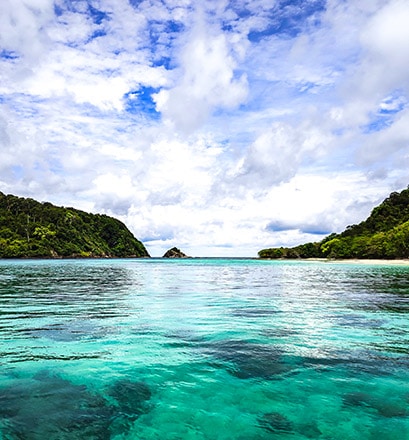
Erholung pur auf den Ko-Rok-Nok-Inseln – Thailand
30 km südlich der Insel Koh Lanta liegen sich die zwei Inseln von Ko Rok Nok gegenüber. Die nur etwa hundert Meter voneinander entfernten Inselchen bestechen durch ihren unglaublichen Charme, der zur Entspannung einlädt. Das türkisblaue Wasser bildet einen eindrucksvollen Kontrast zu den feinen weißen Sandstränden. Palmen, die über die Strände ragen, bieten Besuchern angenehme Schattenplätze zum Erholen nach dem Baden. Als wahrhaftige Zufluchtsorte, an denen der Traum vom Paradies wahr zu werden scheint, bieten die Ko-Rok-Nok-Inseln eine Auszeit jenseits von Raum und Zeit.
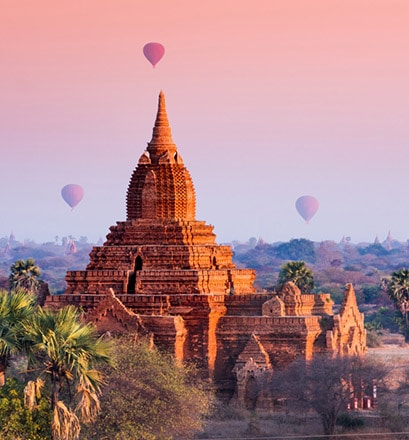
Den Zauber von Bagan erleben – Myanmar
Jeder kennt sie, die Bilder der unzähligen Heißluftballons, die im leuchtenden Sonnenuntergang über die historische Königstadt Bagan und die vielen rund um die Stätte verstreuten Tempel ziehen. Myanmar, das sich bis heute abseits der ausgetretenen Touristenpfade befindet, bietet den wenigen neugierigen Abenteurern, die es dorthin verschlägt, eine ursprüngliche Welt von seltener Ästhetik. Bagan ist das beste Beispiel dafür. Die poetische, spirituelle Hauptstadt des ersten burmesischen Reiches wurde erst vor Kurzem, im Juli 2019, zum UNESCO-Weltkulturerbe erklärt, was das wertvolle Erbe des Komplexes aus über 2.800 Bauwerken betont.








